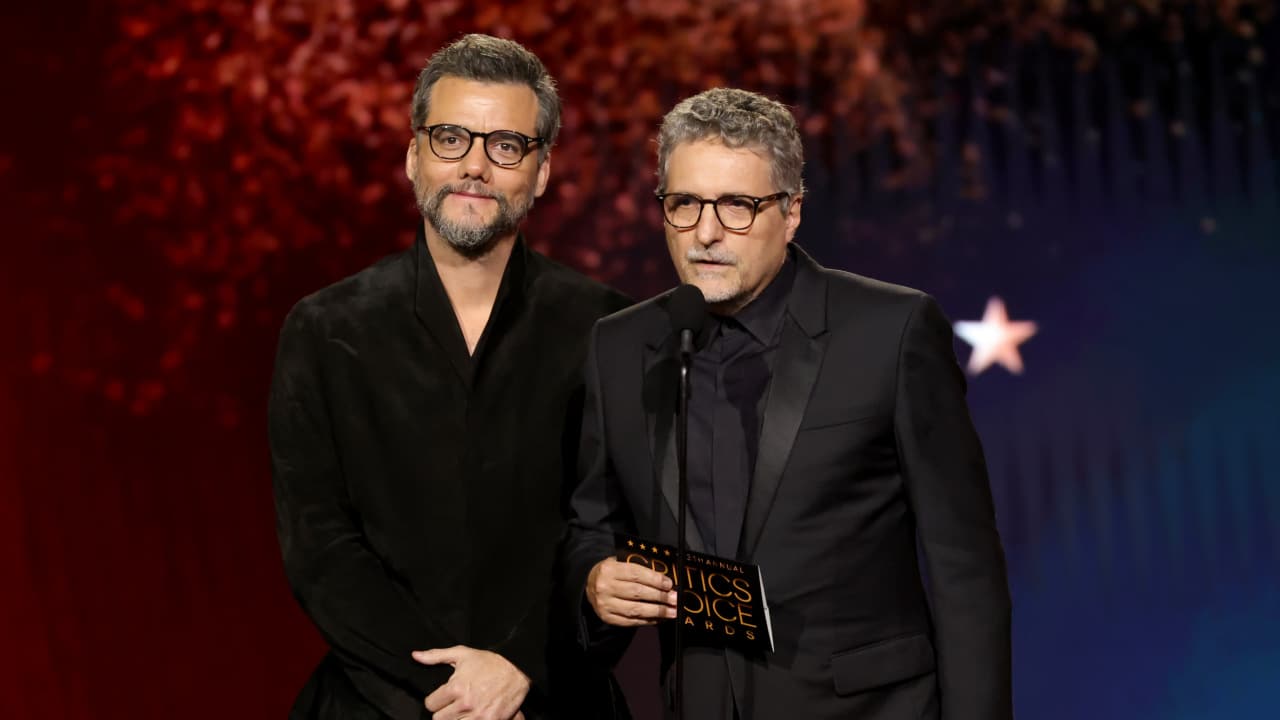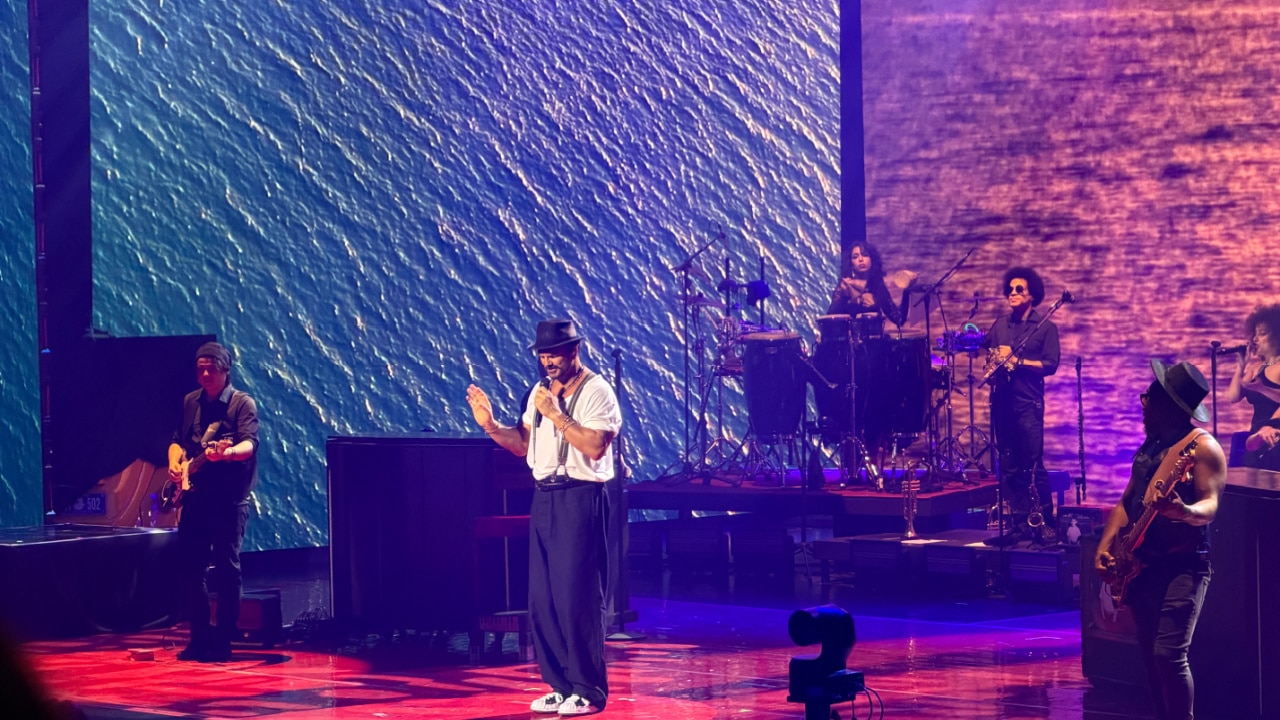Ranking Bad Bunny’s Eras From Trap Star Breakout To ‘Titi Me Preguntó’
If you’ve been a die-hard Bad Bunny fan since his SoundCloud days, then you know about his artistic evolution. El Conejo Malo first came onto the scene with self-made uploads from his home in Almirante Sur, Puerto Rico. He became an overnight sensation, going from bagging groceries to chart-topping with early hits like “Soy Peor,” “Diles,” and more. Since then, Bad Bunny continues to evolve, blending genres and styles — so we’re ranking all his best eras throughout his career.
Today, Bad Bunny is arguably the biggest artist in the world, becoming Spotify’s most-streamed artist for the third year. His World’s Hottest Tour sold-out stadiums this year, becoming the highest-grossing tour by a Spanish-speaking performer in history. While the star is el rey del mundo now, his wide-ranging music eras show his hard work and fearlessness. In Bad Bunny’s world, it’s all “Bendiciones.”
11. “Te Boté”
First up, we have “Te Boté,” which was actually first released by Boricua reggaetoneros Nio García, Darell and Casper Mágico. Still, there’s no doubt the remix was made legendary by Bad Bunny’s verse, stomping in with the unforgettable, “Baby, la vida es un ciclo, y lo que no sirve yo no lo reciclo.”
Plus, who can forget his trademark Kurt Cobain-style round white sunglasses from that time? Released in April 2018, this song preceded his debut album “X 100pre” and set the stage for his future success.
10. “Diles”
Next, this one is for the O.G. Bad Bunny fans, who listened to his 2017 mixtape “El Conejo Malo” back in the day. One note: it seems to have since been taken off Spotify, but can still be found on Soundcloud! “Diles” blew up SoundCloud in 2016, and got Bad Bunny signed to DJ Luian’s Hear This Music label. With stars like Ozuna and Farruko jumping on the track, we’ll never forget the “Diles” era — because, memories . “Soy Peor” followed it, and was arguably the track that introduced the star to people unfamiliar with the trap genre.
9. “Amorfoda”
There’s no doubt 2018 was a big year for Bad Bunny — impulsed by the success of his surprising, emotional single “Amorfoda.” Released on Valentine’s Day that year, it introduced fans to the singer’s sensitive side, talking about heartbreak as a piano plays on. Listeners immediately connected to the song for its “f**k love” meaning, reposting it on social media and making it a hit. The singer told Billboard, “I’ve always loved this song because I wrote it with a lot of sentiment behind it.” We love this era because it signaled a transformation from the singer’s “Latin trap star” label to yo hago lo que me da la gana.
8. “Oasis”
Bad Bunny’s collaborative album “OASIS” alongside J Balvin was no doubt a game-changer, once again moving the Boricua star one step closer to the world stage. The idea of a collab album was already interesting enough, and the 8-track masterpiece does not disappoint. It brought us the epic “La Canción,” a melancholic reflection on love, fame, and the intersection between them. Bad Bunny sings, “Pensaba que te había olvidado, pero pusieron la canción,” effectively inventing perreo triste. Unexpected instrumentation like trumpets showcases how the star was already breaking genre barriers during this era.
7. “X 100pre”
As Bad Bunny’s first true debut album, “X 100pre” broke rules, and was an unexpected introduction to the world at large. While some people still boxed the singer into the trap genre, collabs with El Alfa and Drake showed he was willing and ready to blend dembow, cumbia, and even R&B. This album brought us the gem “Solo De Mí,” which is a philosophical ballad that talks about not being anybody’s property — rather, being oneself’s. Technically a breakup song (but not really), “Solo De Mí” was released side-by-side with other iconic tracks like “Si Estuviésemos Juntos.” The “X 100pre” era was also defined by El Conejo Malo’s “third eye” imagery, used for the artwork and even his red carpet appearances.
6. 2017 and 2018’s game-changing collabs
Moreover, who can forget Bad Bunny’s many collaborations, especially throughout his breakthrough years 2017 and 2018? Sure, he had already amassed countless fans from 2016’s “Soy Peor,” but there’s no doubt his chart-topping “Mayores” with Becky G cemented his stellar fame (it does have billions of YouTube, after all). We’ll never forget this era for bringing us other legendary Conejo Malo collabs like 2017’s “Ahora Me Llama” with Karol G (tbt!), 2018’s “I Like It” with Cardi B and J Balvin, and that same year, “MIA” with Drake. There’s no question the latter two got everyone in the world listening, and told us all that there was no stopping Bad Bunny.
5. “Dakiti”… with a quick “Yonaguni” followup
While Bad Bunny’s February 2020 sophomore solo album “YHLQMDLG” was an old-school reggaeton banger (but more on that in a little), we expected the artist to be done and pack it up for a year. Did that happen? Nope. Instead, the prolific artist kept giving us anthems to sing in clubs, the beach, and family parties. Somehow, seemingly everyone knows the lyrics to 2020’s “Dákiti,” particularly that line about spending $5,000 at Sephora. As if that wasn’t enough, he gave us another gem called “Yonaguni” months later, which kept the party going. This era somehow feels beachier, as if Bad Bunny was inspired by a (admittedly wild) boat day. No tenemos pruebas pero tampoco dudas.
4. Dedicating “Estamos Bien” as an anthem for Puerto Ricans after Hurricane Maria
A Bad Bunny era that will always be planted firmly in our hearts? His release of “Estamos Bien” in June 2018, which he dedicated to Puerto Rico after it was ravished by Hurricane Maria in September 2017. He debuted the symbolic track on The Tonight Show Starring Jimmy Fallon, surprising fans when his performance started with video footage of the hurricane and its damage on the island. He told the audience, “After one year of the hurricane, there’s still people without electricity in their homes. More than 3,000 people died and Trump is still in denial.”
The message was fierce, powerful, and brave, cementing El Conejo Malo as more than just a bonafide rockstar— he was a political powerhouse, too. The lyrics of the song became an anthen of strength for the Boricua people, singing, “Estamos bien, con o sin billetes de cien… No hay nada mal estamos bien.”
3. “Callaíta”
Few will forget the intense breakthrough of “Callaíta,” which populated streets, cars, parties, clubs, and seemingly everywhere else after its release in May 2019. This era was fun, especially looking back: pre-pandemic, this song represents a more lighthearted era that makes us nostalgic today. The seagull sounds at the beginning are legendary, as are lyrics like “El perreo es su profesión, siempre puesta pa la misión” (yas).
The visuals of the music video add further meaning to the track, which centers on a young woman who does what she wants. In a sense, “Callaíta” continued Bad Bunny’s legacy as a feminist, describing a woman who is always “gozándose la vida como es.”
2. “Un Verano Sin Ti”
Next, and vying for the spot at #1, we have probably one of the best albums put out by any Latinx artist… ever. “Un Verano Sin Ti” came into our lives when we least expected it, and while somehow melancholic— it’s also a freedom-tinged, breezy ride into a Boricua summer. The album hit the world hard, cementing El Conejo Malo as Spotify’s most streamed artist again, selling out all those arenas, and making sure everyone craved a Moscow Mule. This time around, we got a Bad Bunny who wasn’t afraid to go the indie route with acts like Buscabulla and The Marías, and who trapezed through genres like cumbia, dembow, and bossa nova seamlessly. In a sense, this album changed it all.
1. Bad Bunny’s prolific 2020 pandemic era that gave us three albums
Last but not least, we have to focus on Bad Bunny’s 2020 — because no one did it like him. While the pandemic brought most of us down and inspired us to stop and reflect, it had the opposite effect on the star. In fact, we got three Bad Bunny albums that year: “YHLQMDLG” (actually released one month before the pandemic really hit in the U.S.), “Las Que No Iban A Salir,” and “El Último Tour Del Mundo” late that year. This era might just be El Conejo Malo’s most iconic, bringing us tracks as diverse as “La Noche de Anoche” featuring Rosalía to the old-school perreo vibes of “Safaera.” It also brought the world up when it needed it the most.




